By Adrian
Addictive was to be our sailing practise boat for Sydney and surrounds. It was only later we came up with the bright idea of living aboard a very small boat. She was setup for weekend cruising and racing.
To turn her into a comfortable live aboard boat we had to upgrade some systems to improve safety and comfort. This is what we chose to do:
Improving Safety

Safety starts with coffee. Being left leaning, inner city, latte sipping people, we could hardly accept anything less than fresh espresso. Luckily Fi found this stove top espresso maker and a manual grinder to keep the standard of latte’s suitably high. We never leave port without a strong coffee in hand.
If the boat sinks, the idea of being in the water chatting to the sharks whilst awaiting rescue was enough motivation to find space for a life raft. The life-raft provides safety from marauding sharks using a thin layer of light weight plastic.
We bought the best anchor we could find (Australian Sarca Excel) to replace the existing large lump of rusting metal. There are few things worse than lying awake wondering if the anchor will hold. We have never regretted spending the money on the anchor and have at times (Double Island Point) been shocked how well it holds. At the time of writing it has set and not dragged 100% of the time.
We steer using a tiller but hand steering for hours at a time is tiring and even harder at night. We added an auto helm that will steer the boat in whatever direction its told. Its clever enough to understand the roll and pitch of the boat and steer appropriately. So far its managed to steer in all conditions even when we were surfing down waves coming into Bundaberg. The only thing it’s missing is a name…
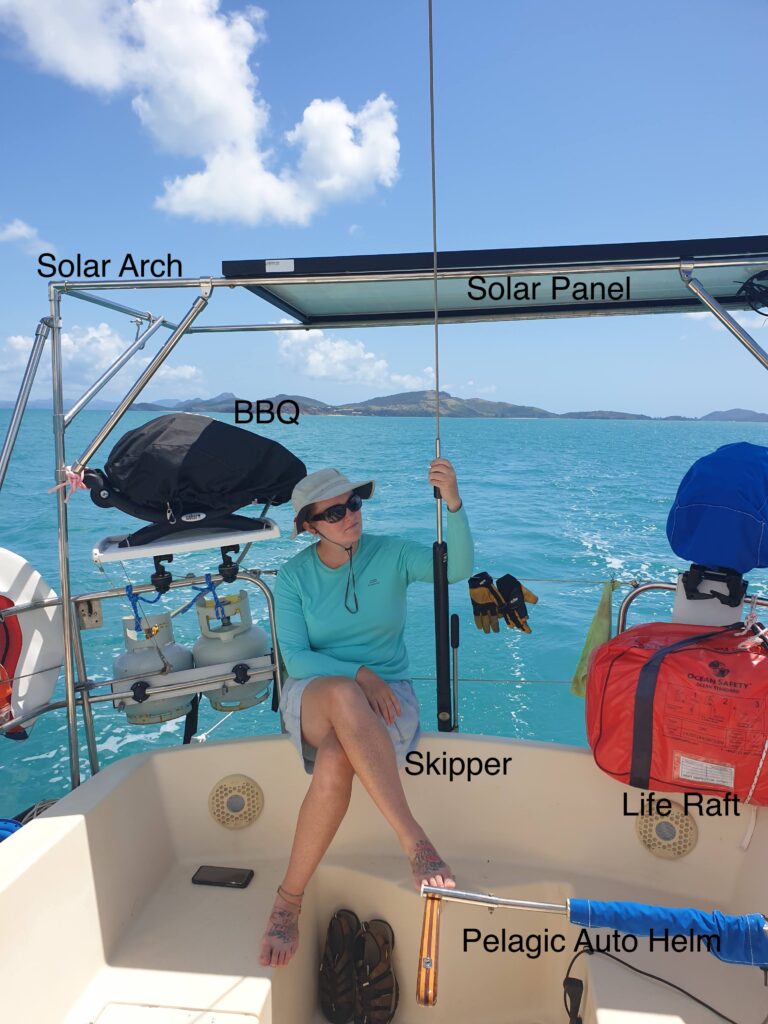
Adding Power
Imagine you buy a litre of milk and there is only half a litre of milk in the container…’Well sir, the container has the potential to carry 1 litre but there is only half a litre of useable milk in it’…insane, yes, but this is how batteries are sold. A 100Ah lead acid battery only has 50Ah of useable energy (really). However, Lithium batteries are really good and you can use 85-90% of the advertised energy in them (did I really say that?). So the simple way to increase our power storage without rebuilding the battery compartment was to switch to Lithium batteries. They have performed really well and 200Ah (170Ah useable) gives us 2 days usage without any charging.
Our only option to charge the batteries was to run the engine which didn’t do much for the ambiance of beautiful quiet secluded bays. We added a large 300W solar panel that fully charges the battery by lunch in Queensland where its sunny every day.
The solar panel needs to be mounted where its not shaded which on our boat meant putting it on an arch over the stern. We got some quotes for stainless steel arches that would have required a second mortgage, and ended up building our own which has proved to be adequately robust.
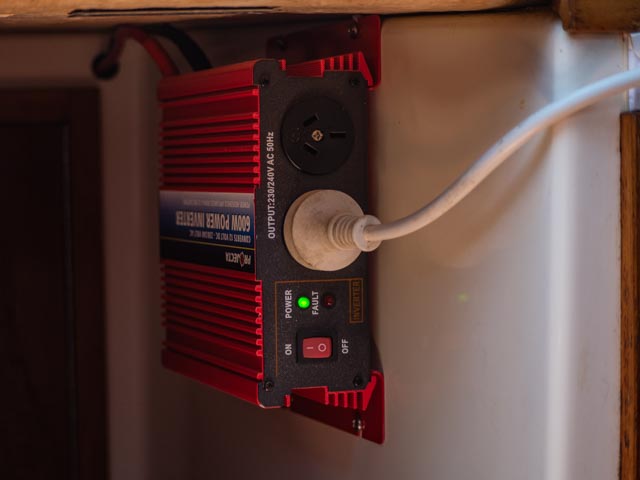
Now we had some watts to play with, we added a small portable freezer (ice for the gin and tonics, and fish storage for all the fish we catch), an inverter (turns our 12V into 240V for laptops, coffee grinders, power tools, but not quite enough for the hair dryer…ooops), numerous 12V USB sockets to charge our social media devices, and some fans to blow dry Bernie after a swim.
Toilet Alternatives
The boat came with a basic marine toilet that could flush directly into the surrounding pristine anchorage. There was also a black water storage ‘bag’ under the main bed that wasn’t plumbed to the toilet as the previous owner had concerns over the potential pong.
After a couple of attempts to improve the toilet we changed tack and installed a composting toilet. Basically a box of compost and wee bottle. Sounds a bit basic, but it doesn’t smell, doesn’t need to be emptied often and freed up a huge amount of storage space that was previously taken by plumbing.
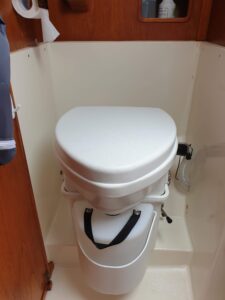
Cooking options
We have a metho stove, but we rightly predicted that we would run short of fuel when a future global pandemic would result in hoarding of metho to make hand sanitiser. Our aussie solution was to add a a gas powered Webber Baby Q on the cockpit rail and enough gas to run it continuously through the next pandemic.
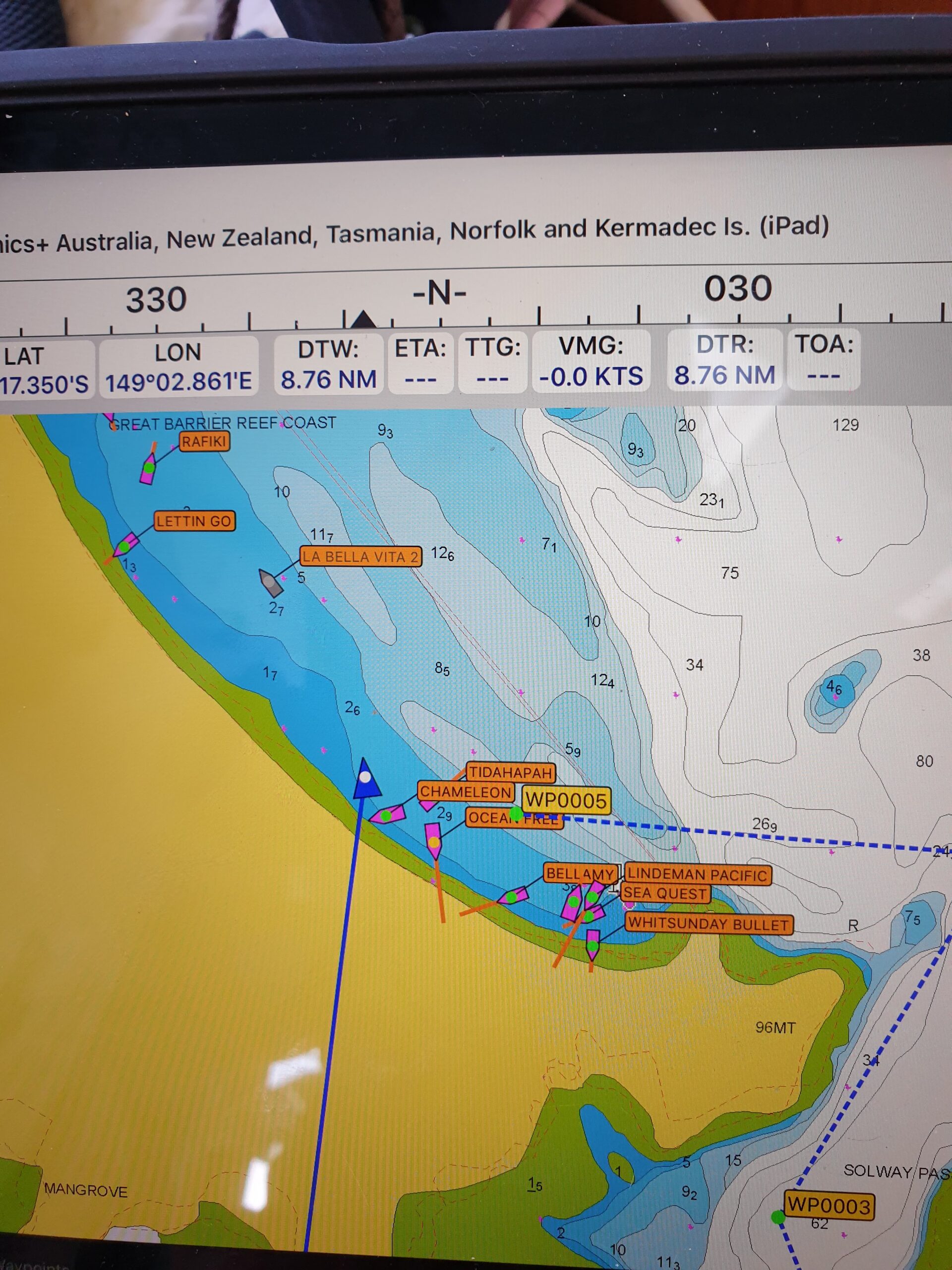
Where are we?
There was a basic chart plotter installed which we supplemented with a couple of iPads running iNavx and Navionics charts. This gave us redundancy and chart viewing in the cockpit. We added AIS which tells you when other boats with AIS (ie the big ones) are going to crash into you. So far it seems to work really well and we haven’t crashed into any major shipping.
AIS devices are also activated on our life jackets should we fall overboard. Being visible on the chart makes it much more likely we will be located and recovered, especially at night.
Other upgrades
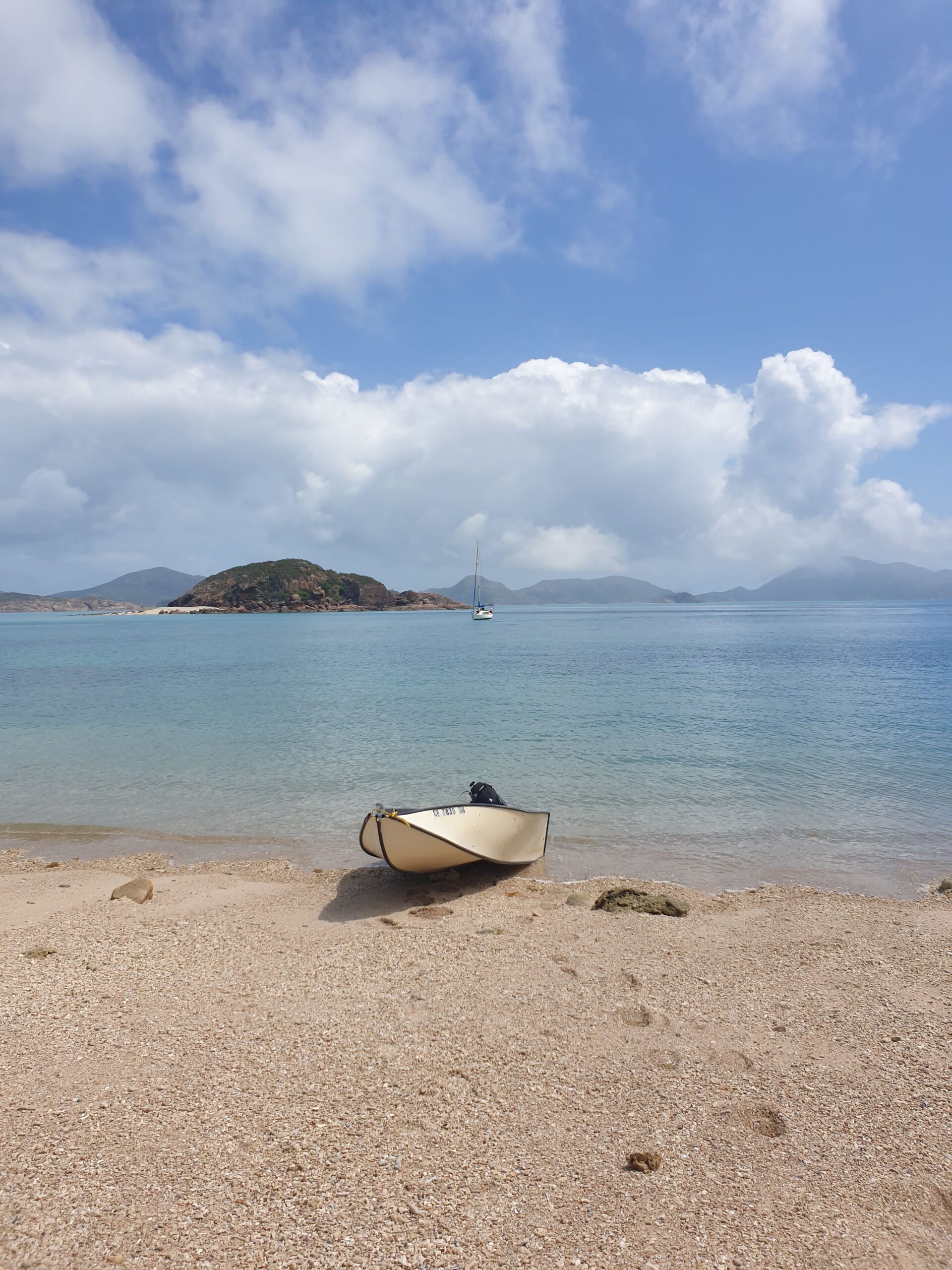
We added a rod holder so we could look like those people that catch fish.
We used to wash the deck using a bucket to get sea water. Now a saltwater pump allows us to hose off the deck and clean mud off the anchor. Its filter ensures there are no unwanted jellies when we wash up in salt water (or give ourselves a cooling outdoor shower).
Hooks… we added about 1000 hooks and there is still never a spare one to hang stuff on.
An old Porta Bote (read foldable dinghy) is our tender. Its fast, tough (read croc proof) and stores easily on the deck. However it takes 20 minutes to assemble and we have sometimes not gone ashore to avoid the effort of constructing and de-constructing.
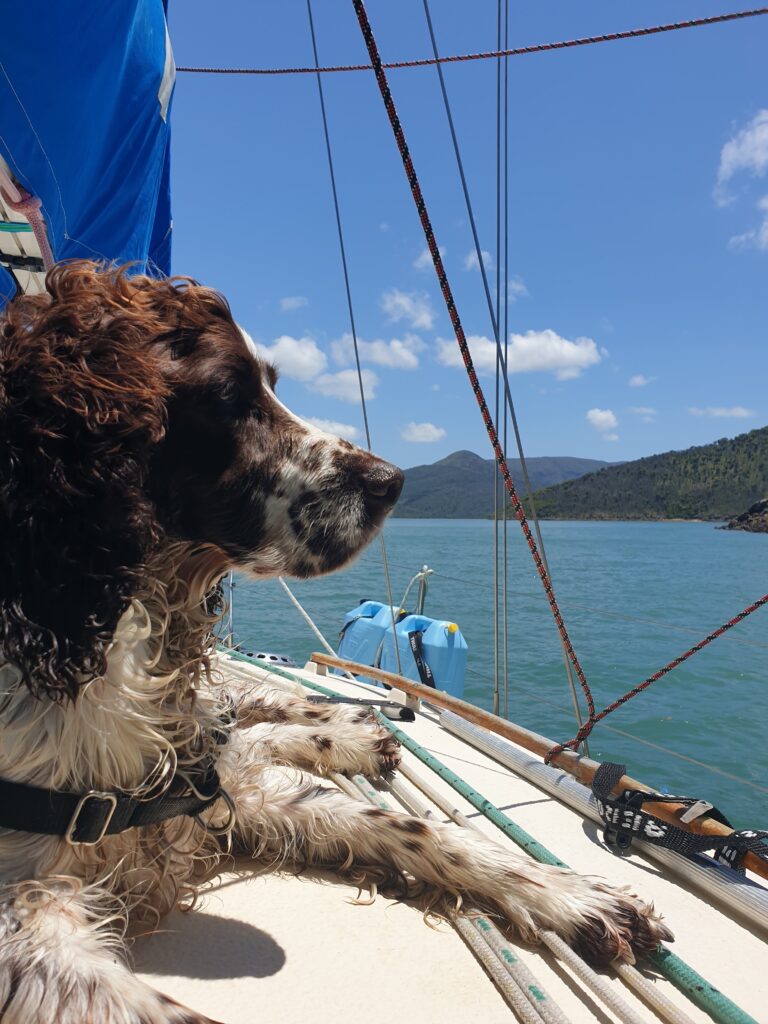
Some things we didn’t add:
Radar – we think the combination of AIS and gazing out into the night is adequate. Radar would add a level of safety but requires lots of power and expense.
Water maker – by the time you add the cost of the water maker, the power upgrade, power generation upgrade and the room it takes, we decided to buy a couple of jerry cans instead. Also strapping jerry cans to the deck makes us look like intrepid long distance travellers.
Electric anchor windlass. We (ok, mostly Fi) pull the anchor up by hand. Once we got used to it we decided we didn’t need an electric windlass. Its good exercise and hasn’t been as difficult as we thought it might be (easy for me to say).
Making it feel like home
In many boats of this age the foam mattresses have a compressed dip so you know where to lie, and slight damp musty aroma. For our comfort and sanity we installed a custom made sprung mattress which is engineered specifically for the marine environment, and is simple to take apart and clean.
We were gifted a 12v aromatic oil diffuser which we use regularly when at anchor or port. It helps to keep mozzies and sandflies away with some beautiful Australia scents of teatree and eucalyptus.

Carpet has protected the floor from sharp claws but also makes the boat quieter and more comfortable.
Fi has collected magnets from destinations she has visited which we attached to a ‘magnet board’ at home. We have replicated this in the boat with a magnet board for the trip.
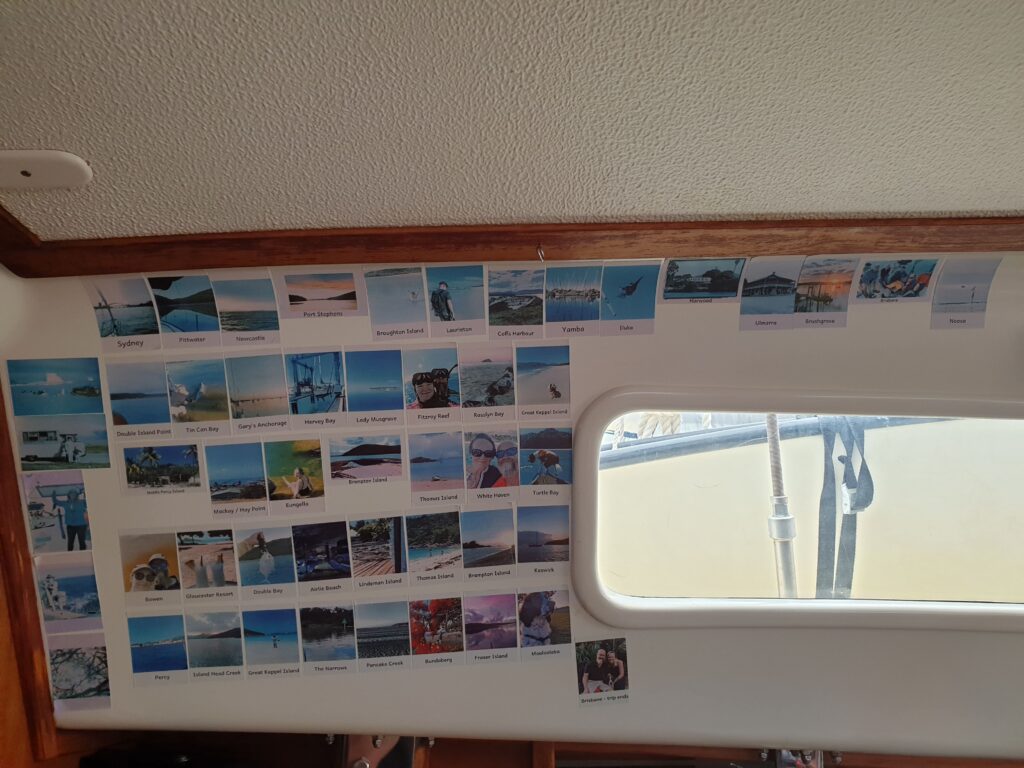
A mini printer has allowed us to print a photo from each port we visit and create visual timeline of our trip. Its a great way to reminisce about the early part of the trip and a reminder of just how far we have come.
Combine all this with a few throw cushions and blankets and we have a homely space with everything we need to adventure comfortably.
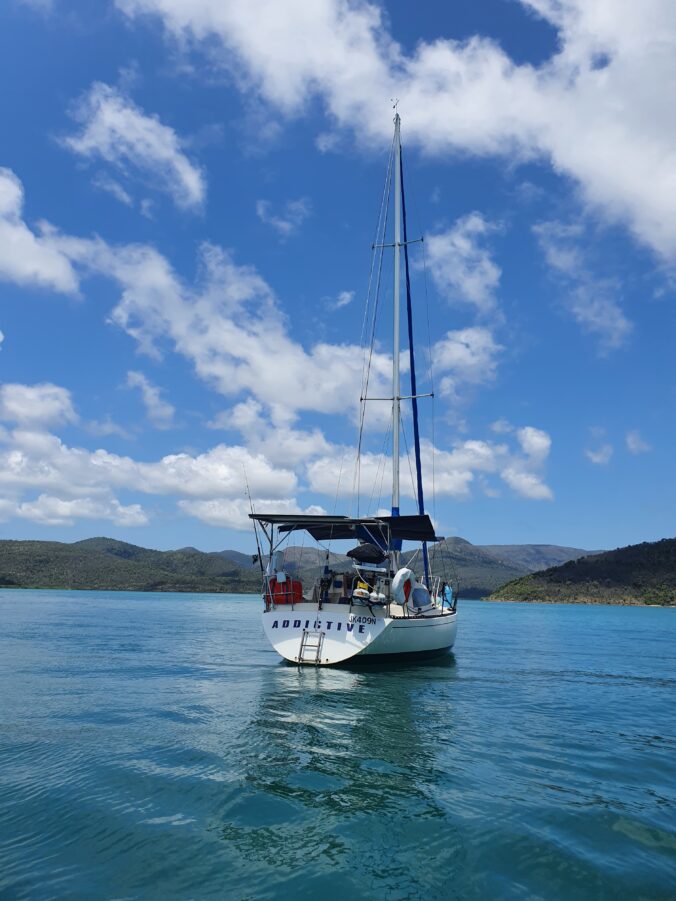


We are 100% onboard regarding the crucial safety factor of coffee. We took a slightly different approach on Idril; we have an Aeropress (which is tiny, easy to use, and makes great coffee…), and splurged on a Lavazza milk foamer. Since Idril has a very robust electrical system, we also opted for an insulated electric kettle. It’s important to start the morning with a decent cuppa!